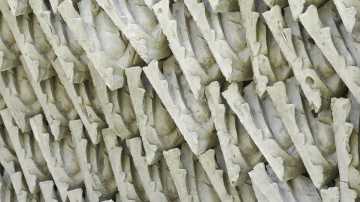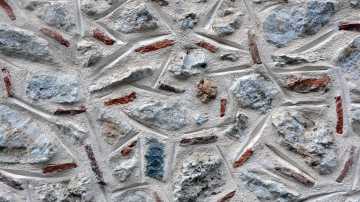We use first and third-party cookies for analytical and statistical purposes and to show you personalised advertisements based on a profile compiled from your browsing habits (e.g. pages visited). For more information, click on our Cookie Policy. You can accept all cookies by pressing 'Accept', you can reject all cookies by pressing 'Reject', or you can customize your choice by pressing 'Manage'.
Tría Ingeniería drives rail traffic thanks to European funds.

Jorge Olmeda, chief financial officer of Tría Ingeniería, discussed this industrial project supported by NextGen funds in a conversation at the CFO Forum with Emma Montserrat, Head of European Funds and Deputy Assistant Managing Director of Bankinter.
The half hour trains stop at the border adapting their systems to the new track cut to just 5 minutes. This is what Tría Ingeniería's gauge-changing technology enables. This development will reduce journey times considerably for the huge number of intercontinental freight trains that traverse Asia and Europe every day.
Tría Ingeniería was set up in Spain in 2006 patenting an automatic gauge-changing system for passenger trains. The challenge 15 years later was to transfer this technology to freight trains, where it is often not only necessary to adapt the axles of the wagons, but also to change the locomotive at each border, complicating the logistics enormously. Could a universal locomotive be developed that could jump from one track to another? That was the major question being asked. The answer is now materialising.
“We are in contact with various locomotive manufacturers, specifically Alstom and Siemens”, Jorge Olmeda said. The objective is to manufacture “a locomotive with the technology this involves”.

14.1 million euros of European funds
The Ministry of Transport, Mobility and the Public Urban Agenda invited applications for European funds, enabling Tría Ingeniería to undertake investment that would otherwise have been very difficult for it. Emma Montserrat said in the interview that this success story involved “substantial aid”.
This amounted to 14.1 million euros in direct aid, 75% of the total project investment, estimated at 18.8 million euros, according to Jorge Olmeda.
The success of this project was made possible by the quality of the project itself, its innovative nature and Tría Ingeniería's track record as a leading company that has worked with railway operators such as Renfe and Adif over many years. Tría is currently active in countries including the United States, the United Kingdom, Chile, Mexico and Peru.
How will the project be financed until the aid is disbursed?
This aid is substantial. But this created the problem for Tría Ingeniería of having the funds needed for this investment before the European money arrived, and how to demonstrate the investments in a timely manner. This is where the other two actors in the project came into play: Bankinter and FI Group.
“He explained that Bankinter offered the company an invoice factoring facility, as the Ministry expects the aid payments to be disbursed at the end of each financial year. The project will run until 31 December 2025”.
Jorge Olmeda said that this financing system means “Tría's cashflow is in very good shape during the year, when it has to invest the money”.
Jorge Olmeda described FI Group as “a company with significant experience in demonstrating spending to public bodies, in this case the Ministry of Transport”. Its advice means that“ we have already demonstrated our spending in 2022”. “Its help has been crucial”, the chief financial officer said.
Emma Montserrat said that Tría Ingeniería's experience could be “very useful for other companies in similar situations”. Publicising these success stories encourages more and more companies to boost their strategic investment with NGEU funds.

The iron borders slowing international trade
The oldest among us will remember the old night trains that used to link Spain to Europe. There was the“ Francisco Goya”, which connected Madrid to Paris, with an interminable stop in Irún while until the train changed gauge, the locomotive was changed, or the passengers transferred to another train.
And there was the famous Pau Casals train-hotel from the Estación de Francia in Barcelona to Zurich, and trains named after Joan Miró and Salvador Dalí to Austerlitz station in Paris, all of which stopped in Portbou because of the change of gauge.
The unusual Iberian gauge dates back to 1844, when the government of Queen Isabel II decided to adopt what was known as the “six Castilian feet”, 1,674 mm, rather than the 1,435 mm that prevailed in Europe. The urban legend says there were military and geostrategic reason for this, to prevent another French invasion. However, the motivations of the Spanish engineers in the mid-19th century were technical, relating to the speed and safety of the trains.
There are three main gauges in the world: the Iberian, the international and the Russian, which is used in some of the countries that were in the Soviet orbit. The Russian gauge is 1,520 mm, halfway between the Iberian and the international gauges. These differences in gauges complicate rail traffic between Asia and Europe.
The 1,674 mm Iberian gauge was reduced slightly, to 1,668 mm, in the mid-20th century, without affecting the trains This gauges is still the standard in use on conventional routes, although AVE high-speed lines have used the international gauge since 1988. The technology Tría Ingeniería is going to implement easily overcomes these international borders, and the internal borders created in Spain by having two gauges following the introduction of the AVE lines.
The problem with track gauges is already automatically overcome for passenger trains thanks to the pioneering systems introduced by Talgo at the end of the 1960s, but the major challenge for Tría is to bring this technology to freight traffic, particularly its powerful locomotives.
Jorge Olmeda gave an example of how his technology will help reduce times and costs in international trade. “When a freight train travels from Beijing to Lisbon - ocean to ocean - it requires three gauge changes. It leaves Beijing using the standard international gauge, arrives in Mongolia using the Russian gauge, and returns to the international gauge when it enters Poland”. And when it reaches the Iberian Peninsula it switches to the Iberian gauge.
This journey currently takes about a month and a half from Beijing to Lisbon. “With our technology, the journey will be about one week”, Tría Ingeniería's CFO explains. It will take a sixth of the time. This will be a watershed moment for rail transport.

